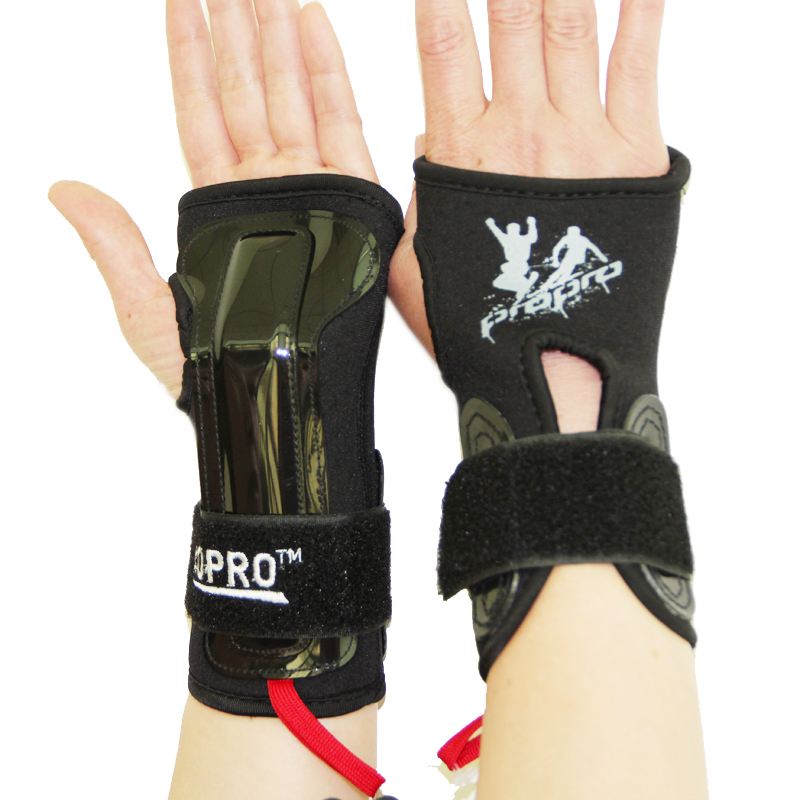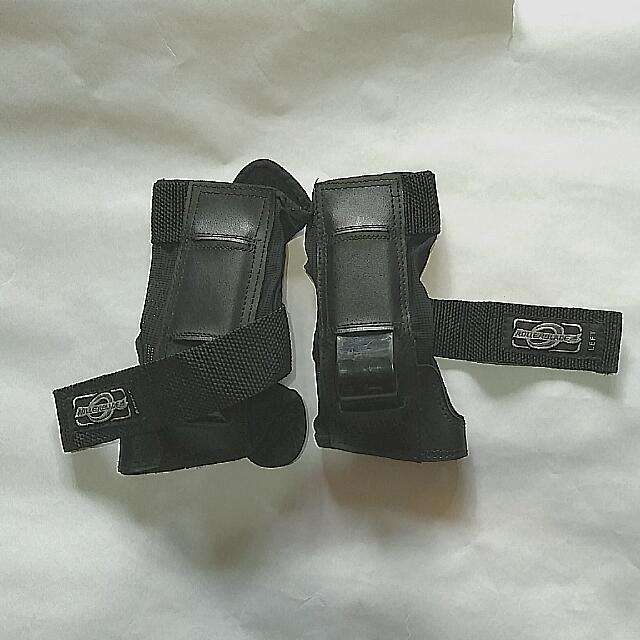How To Wear Wrist Guards: A Step-by-step Guide For Beginners

First, how to wear wrist guards?
Place the shield with the downward-facing curve into the neoprene sleeve and rip it to fit. Wait 30 minutes for the Gel-to-Shell shield to harden before adjusting your fit. Wear it.
Both beginners and senior citizens must have it. The inexperienced are prone to tripping.
They still haven’t mastered the falling technique, so the injury might be serious. As the learning progresses, skaters have more control over how they fall, and there is less damage.
Additionally, as you age, your bones stop healing as quickly. Thus, if you get hurt in old age, it might take years for you to recover. Wearing wrist guards that protect your bones may therefore help you avoid injuries.
Please continue reading as I provide you with more specific instructions on how to wear wrist guards.
How To Wear Wrist Guards?
Rip it. The wrist guard shield made of 3×4 Gel-to-Shell should be taken out by opening the foil back. Air activates the Gel-to-Shell Technology. Right out of the box, it will be flexible before gradually becoming a shield that fits your needs.
The shield should be inserted into the neoprene sleeve with the downward-facing curve facing outward.
Fit it. Onto your wrist, affix the neoprene sleeve with the Gel-to-Shell shield. Place the wrist guard where you would typically wear the wrist guard while playing, with the shield inserted.
Adjust your fit. The shield can be made to fit your wrist by sanding the shield’s center.
Wait 30 minutes for the The gel-to-shell shield will harden. Limit your motion for a truly custom fit.
Wear it. Your guard is prepared to view the field after 30 minutes has passed. Allow the guard to sit and cure for at least an entire night after installation for best results.
Do Wrist Guards Really Protect?
Wrist injuries are one of the most common injuries in inline skating, roller skating, skateboarding, and snowboarding (though not skiing, where most are to the knees). People extend their hands to stop a fall, just like you would, and they strike the ground with a forceful enough impact to bruise, tear ligaments, and dislocate or fracture the wrist.
In order to prevent the wrist from bending too far backwards and to help it slide along the floor when you fall, wrist guards use moulded plastic over the front and back of the wrist to absorb some of the impact. Less weight is pushing the hand into the ground because your wrist is sliding.
Just like you wouldn’t expect your helmet to protect your knees, wrist guards provide no protection for other areas like upper arms or shoulders.
To see if they work, researchers tested them. They fitted wrist guards to severed cadaver arms (yes, severed arms of the dead). When they were equipped with wrist guards, they had to drop them from a higher angle and more frequently to injure the wrist.
One study found the use of any guard reduced peak impact forces by a minimum of 31.8% in an artificial set up.
According to a different study, people who were wearing wrist guards suffered less serious wounds.
“Wrist guards and elbow pads are effective in protecting in-line skaters against injuries”
Skaters in an accident involving the wrist were almost 13 times more likely to get a wrist injury if they weren’t wearing them.
A related fact that is relevant to this inquiry is:
There is a European standard for inline skating wrist protectors
Equipment testing is a part of this. We can state that engineers built them with functionality in mind and that they took into account the physiology of the body without saying much more.

Is IRisky When “Move The Break” Up The Arm?
Wrist guards are thought to “move the injury” from the wrist up the arm in the community of skaters, skateboarders, and snowboarders. There aren’t many studies that specifically examine this, but the professional opinion seems to be that in these situations the injuries might have resulted from bad falls or very severe falls that would have been worse without the wrist guard in place.
The use of wrist guards may reduce the risk of hand, wrist, and forearm injuries, but one study of snowboarders’ case studies found that it may actually increase the risk of the elbow, upper arm, and shoulder injuries.
As another study discovered a protective effect on shoulder injuries, the verdict is still out at this time. There is also slight evidence they could increase the risk of finger injury in snowboarders
Another expert in the field claimed that a splint that is too stiff could result in a broken elbow rather than a broken wrist because the shock would be transmitted along the lower arm in a bad fall. Notably, this is referring to snowboarders rather than inline skaters, whose falls may more frequently occur at higher speeds in various circumstances.
One case study report on “splint top” fractures in inline skating focused on fractures that were visible at the edge of the wrist splints, indicating that the wrist guard was the likely culprit.
Note that these studies aside, wrist guards are still considered a very good idea because of the high incidence of wrist injuries in inline skating and their ability to protect against them, with only a tiny minority of cases suggesting they “moved the injury”.
When Is It Appropriate To Remove Wrist Guards?
In some sports, especially those that call for grip, it might be debatable whether they are a good idea.
According to some research, wrist guards worn by kids climbing on monkey bars or other climbing equipment may increase the risk of fall-related injuries to unprotected body parts. Similar situations occur when children are riding bicycles and lose their line of steering, possibly due to a decline in dexterity.
Therefore, it does depend on who you are and what you’re doing.
We circle back around to inline skaters of all stripes.
Final Words
It is essential to properly fit your protective gear whether you play baseball, softball, or another sport. Inadequately fitting equipment can make you uncomfortable while playing and increase your risk of injury if a hard check or foul ball strikes an exposed area of your body. Small, medium, large, and extra-large are the four sizes that are offered for all wrist guards.
Do you know how to put wrist guards on, in the end? I really appreciate you reading. Last but not least, have a good day and enjoy your trip!